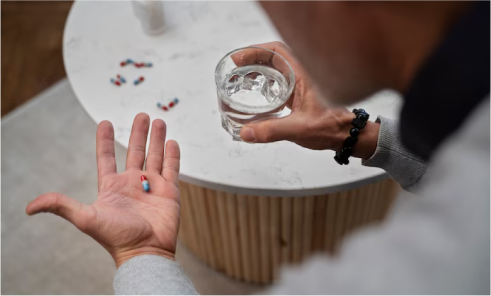Recent Post

Time to reorder? Don't Run Out

Make 2017 Your Year

All About Diabetic Neuropathy
All Natural Relief for Different Types of Peripheral Neuropathy:
"The best way to predict the future is to make it yourself"
"If you want to forget your own problems, help someone else work on theirs" - Mother Teresa

Why So Salty?
Greetings!
Dietary guidelines change more often than the weather, but one old song that we keep hearing is the salt intake debate.


We’ve been told for years that excess sodium intake is connected to a host of medical problems. Chief among them being hypertension or high blood pressure. This in turn is linked to cardiac disease.
Na (sodium), and potassium too, are important electrolytes responsible for the electro-chemical maintenance of our muscles and nerves… that’s why we cramp up when we sweat too much.
The thing to remember is that individuals vary quite a bit in their salt requirements, so a recommendation for a mature woman cannot be the same as for a teenager… or even another more or less active woman of similar age.
Our craving for salt is a biological mechanism that signals our body’s needs. That is only useful insofar as we listen to the “stop” signal” too.
The American College of Cardiology recommends 1,500-2,300 mg of sodium per day… about a teaspoon.
But here’s the rub: Our sodium intake is overwhelmingly from food sources that mostly defy measurement. Frozen foods, canned foods, juices (especially tomato juice), soups, cheese, snacks and even celery… yes, celery can be loaded with sodium.
Add to that the results of the 2005 FDA program to trim salt from our diets was…. A total failure. It didn’t move the needle a bit on our salt habit.

We drink water at different rates, sweat at different rates (thus depleting sodium) and live in different climates.
That all affects our need for sodium… so how can we know when enough is enough?
First, relax.
The esteemed British medical journal, The Lancet , has made a study across decades and thousands of folks. They estimate that the more reasonable salt intake level is more like 3,500- 5,000 mg or 2.5 times the previous recommendation.
As always, excess is detrimental to optimal health… on both ends of the spectrum.
Avoid excessively salty foods and drink plenty of water… especially if hypertensive.
And get out there a sweat a bit.
Yours In Health,
Your Friends at NeuraVite
